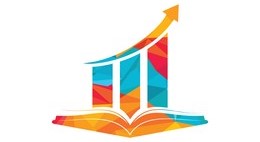Improving Students' Poetry Writing Ability Class X of Tomosa Christian Private Vocational School 2 by Using the Model Quantum Learning
DOI:
https://doi.org/10.37010/int.v2i1.370Keywords:
writing a new poem , a quantum learning model of learningAbstract
This research is based on the results of observations that have been made by researchers. The researcher found that the ability of students to write new poetry in class X of the Tomosa Christian Private Vocational School 2 still did not meet the minimum completeness criteria (KKM) that had been set. This problem is caused by students being less motivated in writing a poem because they are unable to find ideas and students find it difficult to determine diction, figure of speech, theme, meaning and the application of learning methods in the classroom is not optimal. Writing a new poem is stringing words into a poem that is not bound by any special rules, namely the number of lines per stanza, the number of syllables per line, rhyme, rhythm, rhythm and word choice. In writing free poetry, it is important that the author's feelings can be expressed in the form of the right words so that they produce imaginative meanings. This study aims to improve the ability to write new poetry through the Quantum Learning learning model for class X students of Tomosa 2 Gido Christian Private Vocational School for the 2020/2021 academic year. This research is a Classroom Action Research (CAR) which was carried out for two cycles. Each cycle consists of planning, implementing, observing, and reflecting. The research subjects were students of class X Christian Private Vocational School Tomosa 2 Gido for the academic year 2020/2021, totaling 18 people. 9 men and 9 women. The results of the data analysis of the value of poetry writing knowledge in the first cycle the average value of students = 54 (predicate "Less"). The results of the data analysis of the value of poetry writing knowledge in the second cycle the average value of students = 79.16 ("Good" predicate). The results of this study are an increase in the ability to write new poetry through the Quantum Learning learning model for class X students of the Tomosa 2 Gido Christian Private Vocational School for the 2020/2021 academic year.
References
Arikunto, S., dkk, (2015). Penelitian Tindakan Kelas. Jakarta: Bumi Aksara.
Aris, S. (2010). 68 Model Pembelajaran Inovatif Dalam Kurikulum 2013. Yogyakarta: Ar-RuzzMedia.
Fitri, M. (2020). Penerapan Metode Pembelajaran Quantum Learning di Lembaga Perolehan Anak Usia Dini. Jurnal Pendidikan Raudhatul Athfal.
Mahid, Z. (2013). Peningkatan Kemampuan Menulis Puisi Melalui Model Pembelajaran Quantum Teaching Tipe Tanduk. Semarang. Jurnal Pendidikan Bahasa Dan Sastra Indonesia.
Anwar, M. S. M. A., dkk. (2014). Teknik dalam pembelajaran bahasa Indonesia kurikulum 2013. Jakarta: Raja Grafindo Persada.
Ningthyas, (2009). Peningkatan Kemampuan Menulis Puisi Siswa Kelas X SMK 5 dengan Metode Pembelajaran Imajinatif Tahun 2009/2010.
Warsidi, E. (2009). Pengetahuan Tentang Puisi. Bandung: PT Sarana Ilmu Pustaka.
Wanggit, A. (2014). Peningkatan Ketrampilan Menulis Menggunakan Pendekatan Proses dengan Media Gambar SDN 3 Sakra. Jurnal Prima Edukasia 2(1).
Zainudin. (n.y.). Meningkatkan Kemampuan Menulis Puisi Bagi Siswa Kelas IV SDN 1 S Dongko dengan Metode Praktek. 4(9).
Downloads
Published
How to Cite
Issue
Section
License
Copyright (c) 2021 Noveri Amal Jaya Harefa, Hilaria Iwan Ningsih Gulo

This work is licensed under a Creative Commons Attribution-NonCommercial-NoDerivatives 4.0 International License.
The copyright of the received article shall be assigned to the journal as the publisher of the journal. The intended copyright includes the right to publish the article in various forms (including reprints). The journal maintains the publishing rights to the published articles.
INTELEKTIUM Journal is licensed under a Creative Commons — Attribution-NonCommercial-NoDerivatives 4.0 International — CC BY-NC-ND 4.0







